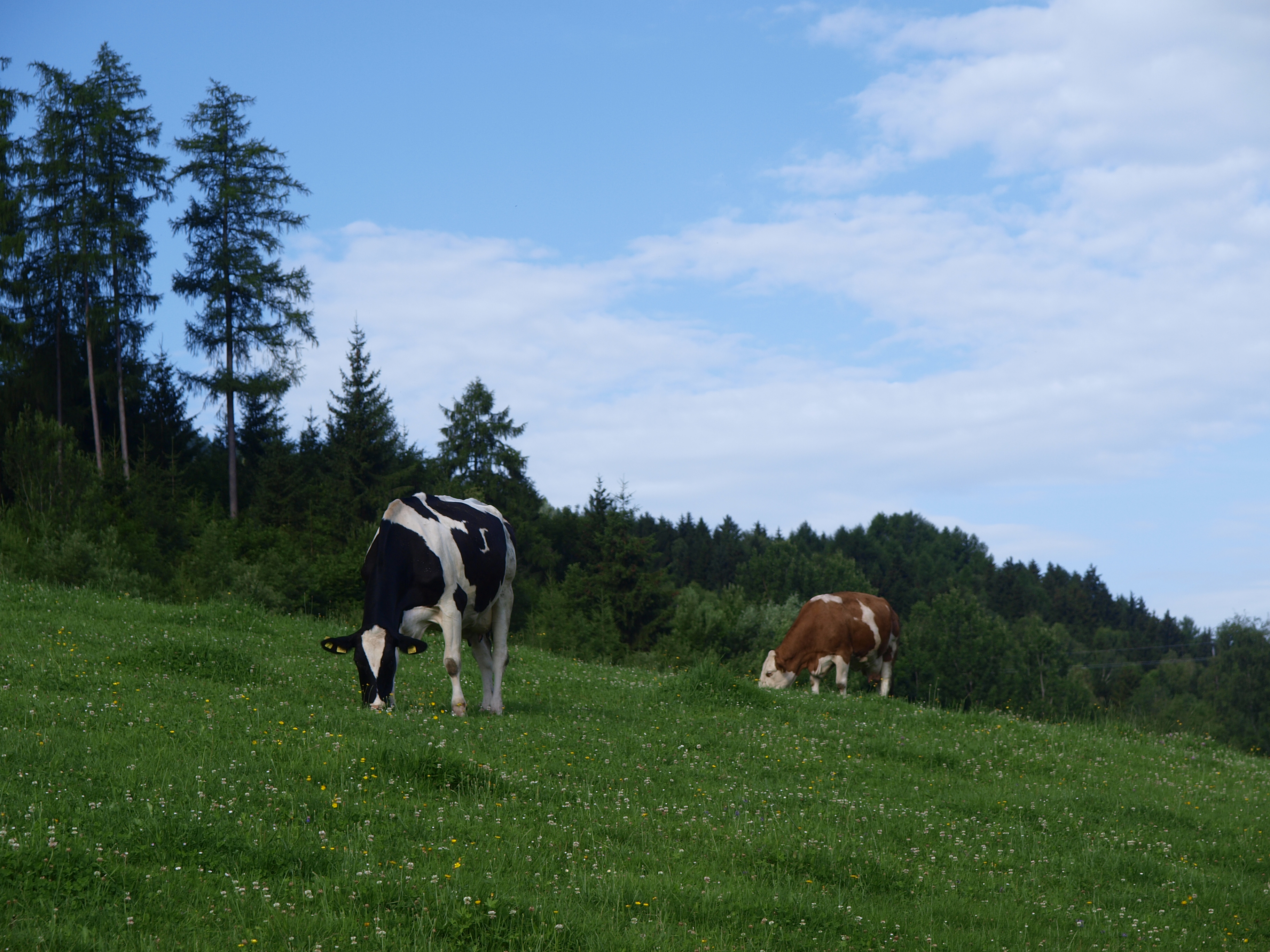Source:
Häusler J., Steinwidder A., Entrance D., Wildling J., Resch R., Steiner B., Kaufmann J., Gallnböck M., Gasteiner J., Velik M., Gruber L.,:
Final report on half-day pasture:
Feed intake and milk production of dairy cows fed indoor and
alternatively half a day on pasture considering the possible
The changes in the supply of energy and raw materials will also have consequences in agriculture. Stronger global demand for food, coupled with the simultaneous expansion of energy production on arable land, will inevitably lead to a further increase in the prices of grains and arable crops. From both an economic and ecological perspective, there are limits to the use of concentrated feed. Rising costs for supplementary feed, machinery, buildings, energy and labor are therefore increasing interest in pasture farming in many parts of the world. In Austria, too, the grazing of dairy cows has gained more attention and importance again in recent years. With optimal management, pasture provides inexpensive, high-quality feed, which means that concentrated feed can be saved and feed costs reduced. Current business evaluations from practical farms confirm that, especially in organic dairy farming, an increase in the use of concentrated feed means that, on average, a decline in direct cost-free services must be expected. According to surveys, around 30% of all milk producing farms can imagine pasture farming. However, the possibility and also the willingness to keep animals on full pasture are significantly less pronounced. Grazing in the form of hourly or half-day grazing seems to be a good option to be able to use the advantages of cheap pasture feed on these farms too. A project at the HBLFA Raumberg-Gumpenstein focused on keeping dairy cows on an hourly (half-day) pasture.
How was it investigated?
16 dairy cows (Holstein Friesian and Simmental) were evenly divided into two groups. One of these two groups (stable group) was kept in the stable for the entire experimental period and the other (pasture group) was given access to a (short-grass) pasture for 6 hours after the morning milking. The effects of pasture farming on feed intake and nutrient supply, milk yield and milk ingredients, cell number and milk fatty acid patterns were examined. The aspect of possible (protein) concentrate savings was also taken into account in the study. The experimental data was evaluated as part of a master's thesis at the University of Natural Resources and Life Sciences (BACHLER, 2015).
No differences in feed intake
The results of the present work show that the two experimental groups did not differ from each other in their total feed intake with an average of 17 kg dry matter (DM) per day, but that in the pasture group the intake of the more nutrient-rich pasture feed (average 7.5 kg DM/day) a better energy and protein supply could be achieved.
Significant differences in milk yield and milk ingredients
This led to a second lactation peak shortly after leafing out from pasture (1st test week: pasture group: approx. 30 kg milk/day, stable group: approx. 27 kg milk/day) as well as better persistence (end of pasture: pasture group: approx. 20 kg milk/day). day, stable group: approx. 12 kg milk/day) and thus to a significantly higher milk production of the pasture group (pasture group 3,756 kg ECM (= energy-corrected milk), stable group 2,975 kg ECM) in the test period.
The protein (3.19% and 2.94%) and urea contents (32.2 mg/100 ml and 18.5 mg/100 ml, respectively) were significantly higher in the pasture group than in the stable group. Also in the efficiency parameters ( In terms of milk, feed conversion and energy conversion efficiency, the pasture group performed better than the stable group. In addition, approximately 29% higher basic feed performance was achieved in the pasture group.
Conclusions for practice
The results of the present study confirm that incorporating pasture feed into the ration brings benefits and has great potential. Hourly or half-day pastures can also be managed as short grass pastures and are a good alternative to year-round stable keeping. The system is also suitable as an introduction to pasture farming. High individual animal performance does not have to be foregone – if the use of concentrated feed is adjusted accordingly. The young, nutrient-rich pasture feed leads to a higher basic feed performance, which means that milk production can be increased with the same amount of concentrate feed or concentrate feed, especially expensive protein concentrate feed, can be saved with the same milk production.







